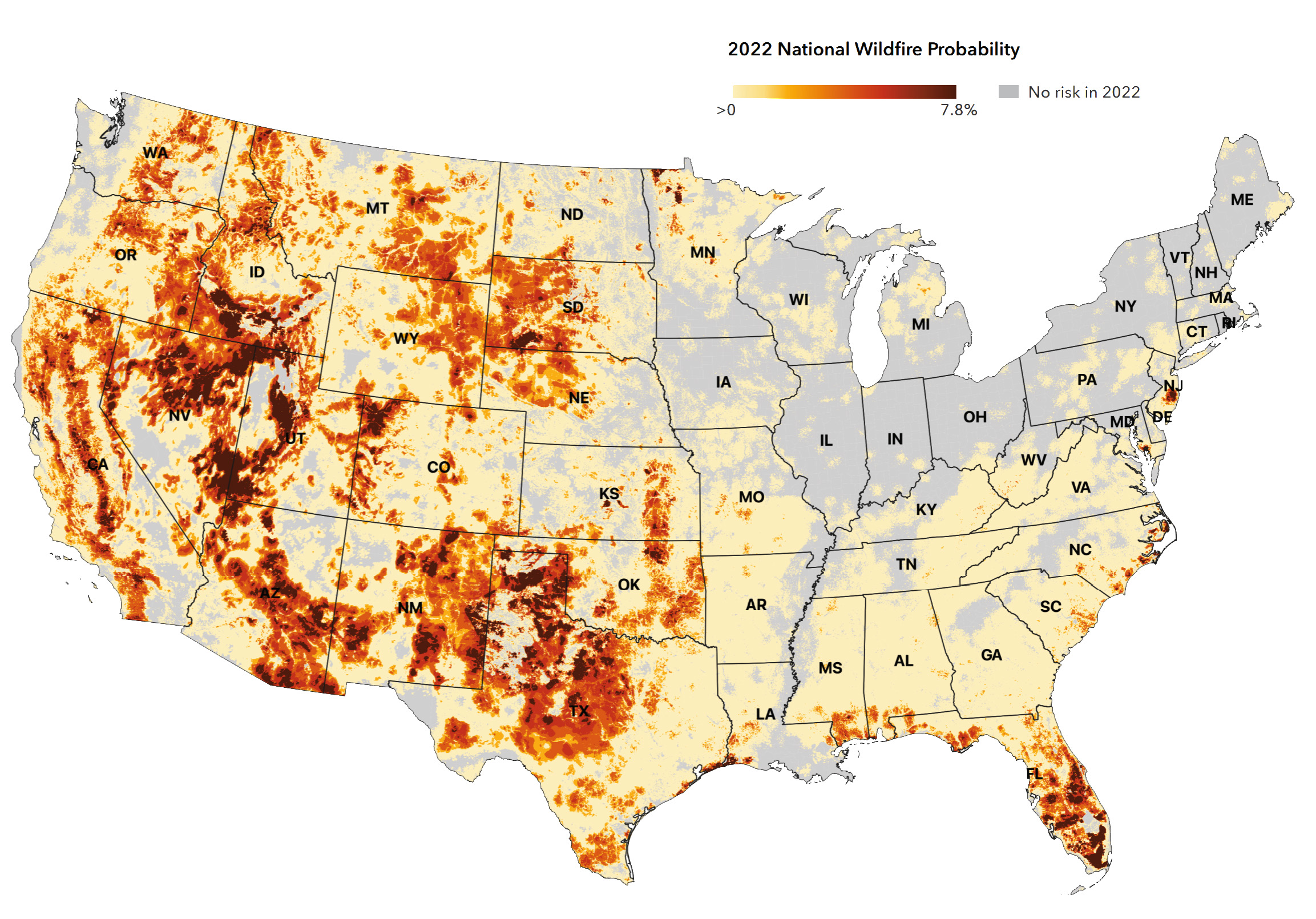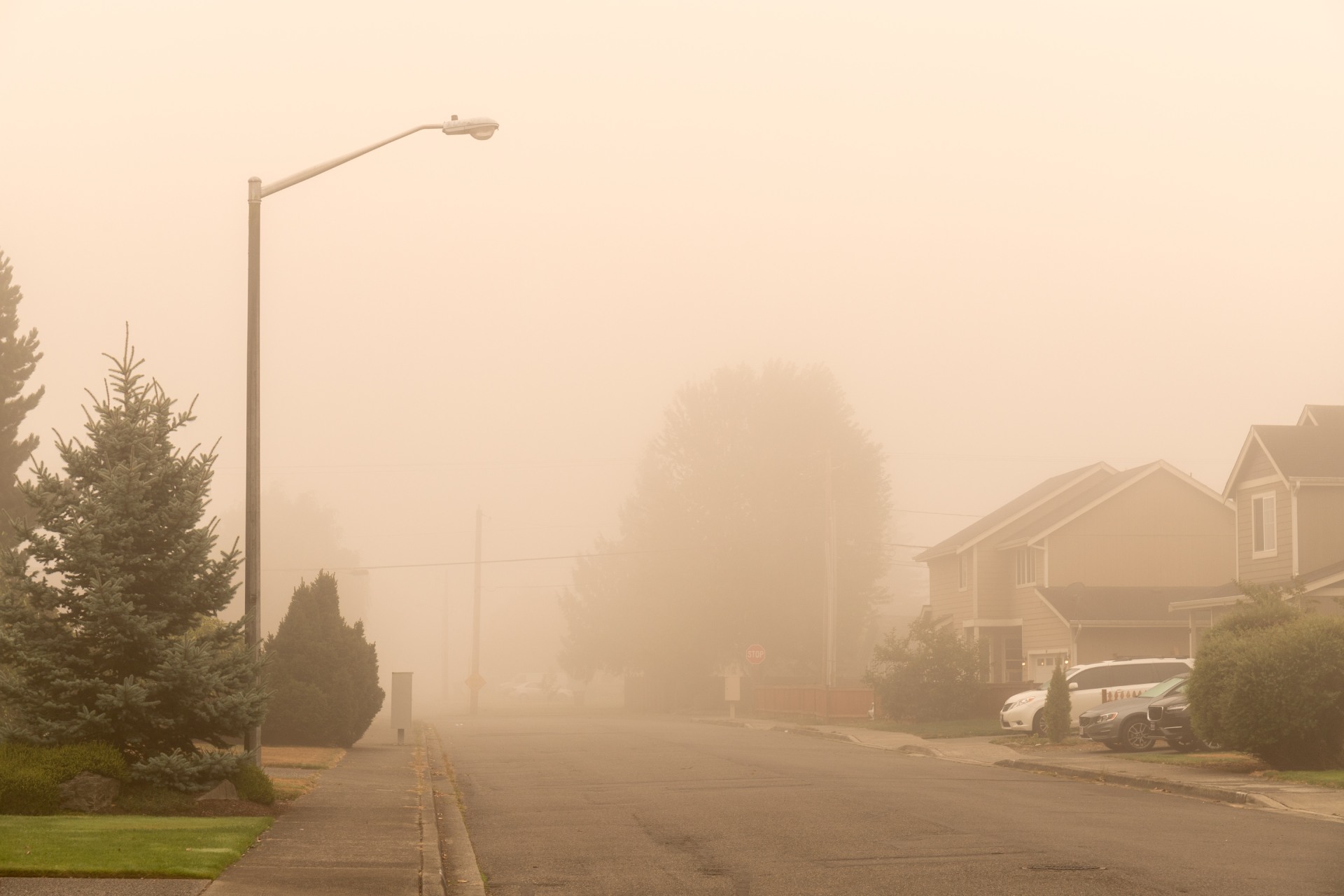
As we enter the summer months, temperatures start to reach their annual highs. While most people see this as a welcome break from the chilly winter and rainy spring, there is an inherent danger these temperatures pose to wildfire prone areas. The state of California is a prime example.
When is Wildfire Season?
The wildfire season in California typically ranges from May through October. However, due to increased temperatures and decreased rainfall, the season is expanding and trending towards a year-round fire season1. For example, from 2016 to 2022, most fire seasons started in either January or February2.
The “peak” or highest frequency of fires typically occurs in July. However, July is not the month with the most destruction in terms of acreage burned and structures damaged. After a hot, dry summer and conditions worsened by preceding, smaller fires, the more destructive fires occur in September and October1. Four of the top five most destructive fires have occurred in October including the Camp Fire in Butte County that destroyed almost 19,000 structures in 20183.
The 5th National Risk Assessment: Fueling the Flames l © First Street Foundation, May 16, 2022.
Embers- Fire Superspreaders
Although the fires themselves can spread rapidly, the embers released from the fire can exponentially increase the spread of fire. Embers, airborne pieces of burning wood or vegetation, can spread for miles in any direction of the fire posing a threat to structures well beyond the fire’s edge4. Embers can float into spaces between roof coverings or roof vents and quickly start and spread flames over the roof.
Polyglass Innovation
As weather conditions increase in volatility and natural disasters intensify, it is imperative to take the proper precautions to protect yourself and your assets, like your home. However, the typical building is vulnerable to wildfire and one of the most susceptible areas is the roof. The first line of defense is a Class A fire rated shingle, tile, or metal roof covering. However, contractors and building owners can take roof protection a step further with a Class A fire rated underlayment.
Polyglass has pioneered a steep slope roof underlayment called Polystick XFR to enhance the roof’s fire and ember resistance. Polystick XFR is a dual-purpose underlayment that provides both fire-resistance and a waterproof seal over the roof deck. Polystick XFR accomplishes this through two patented technologies: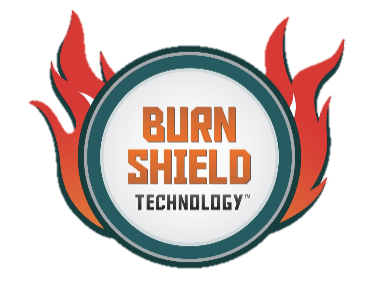
- ADESO® dual-compound self-adhered technology combines a high quality modified bitumen upper compound and an aggressive self-adhesive compound on the bottom to provide proven waterproofing protection
- Burn-Shield Technology® offers fire resistance capable of achieving the highest level of fire ratings
The common method to achieve a Class A fire rating requires fire rated slip sheet followed by a second slip sheet, roofing felt or underlayment. After extensive testing under UL 790, Polystick XFR can provide a Class A fire rating over a combustible deck with a single layer*. This single layer of Polystick XFR reduces labor and material cost benefitting both contractor and building owner.

Common Roof Coverings
Metal has great qualities as a roof covering but does not offer the best fire resistance.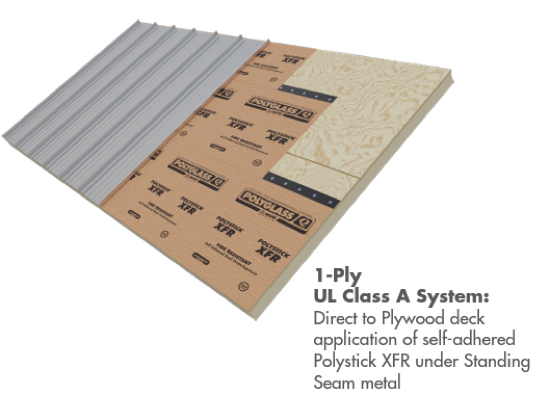 Metal transmits heat very efficiently from an exterior fire source to the combustible roof deck requiring Polystick XFR to achieve a UL Class A fire rating. By installing Polystick XFR under a UL Listed aluminum, steel or copper covering, the roof system achieves Class A.*
Metal transmits heat very efficiently from an exterior fire source to the combustible roof deck requiring Polystick XFR to achieve a UL Class A fire rating. By installing Polystick XFR under a UL Listed aluminum, steel or copper covering, the roof system achieves Class A.*
Although clay and concrete tiles are Class A roof coverings, Polystick XFR may still be desirable to increase ember resistance as a component of a Class A system under UL 790.
If you use Class A asphalt glass fiber mat shingles for your roof covering, you achieve a Class A rating for your system if you utilize Polystick XFR as an underlayment.
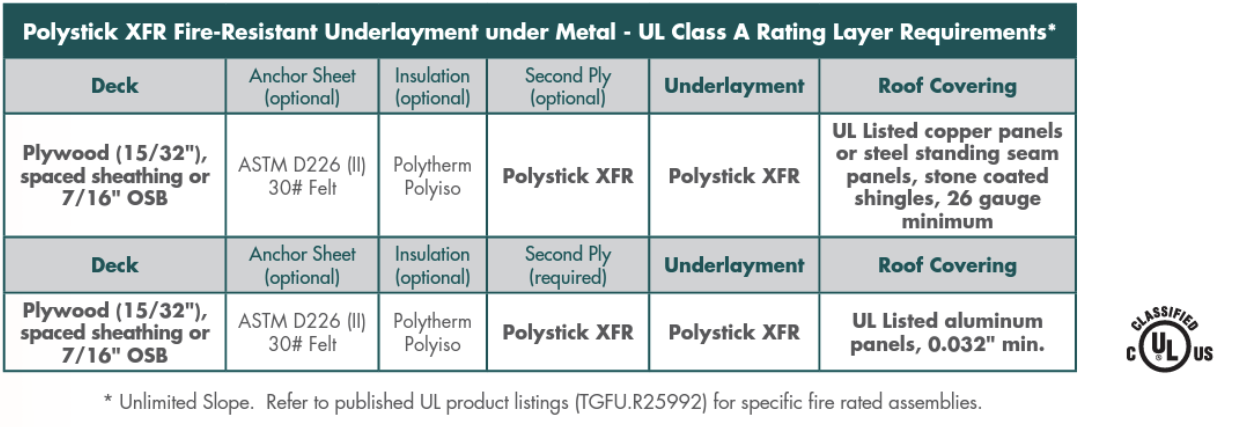
Enhanced Warranty
Not only will Polystick XFR lower labor and material costs, but it will provide contractors and building owners peace of mind for a long time. Polystick XFR has a standard 10-year material, but a registered Polyglass contractor can achieve a warranty up to 30 years through the enhanced 2-Ply Polystick Labor & Material Warranty.
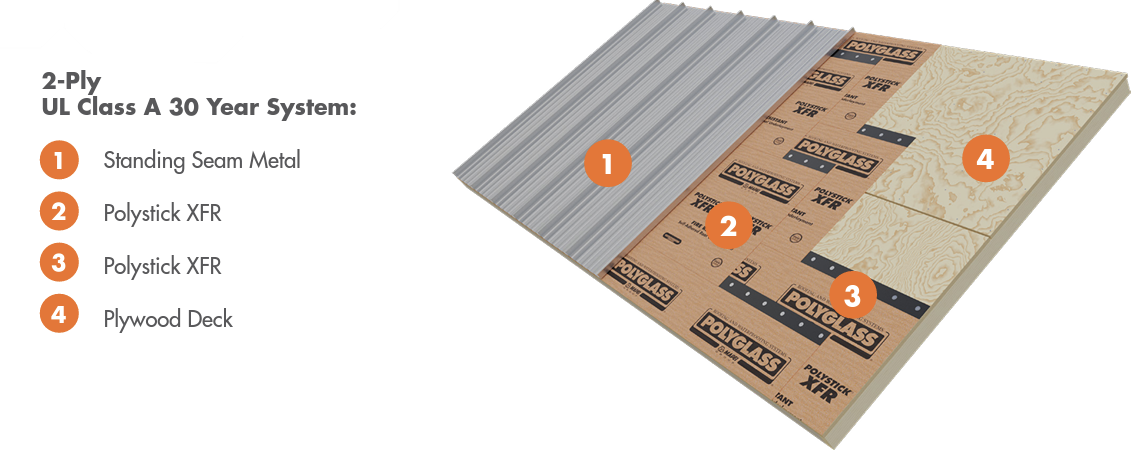
If your interest in Polystick XFR and Polyglass’ other innovative roofing and building envelope solutions has been piqued, contact us today to learn more! To learn about additional ways to protect your home against wildfires, visit Wildfire Prepared.
